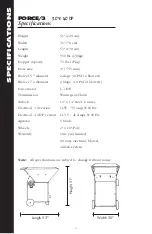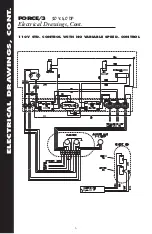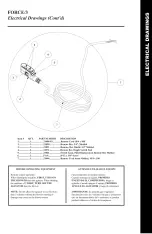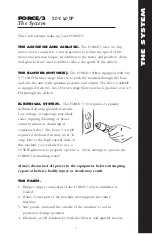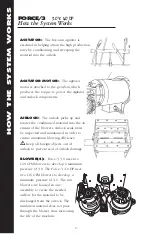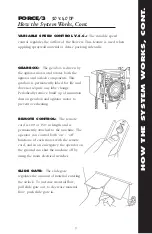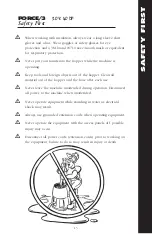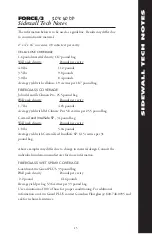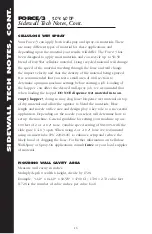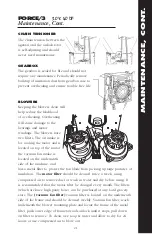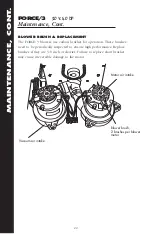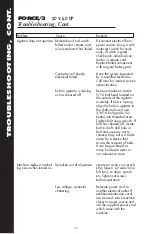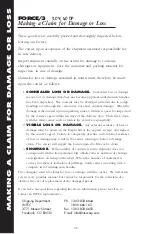
O
P
E
R
A
T
I
O
N
A
L
G
U
I
D
E
L
I
N
E
S
14
FORCE/3
3.0 & 4.0 DP
Operational Guidelines
BLOWING SIDEWALLS, CELLULOSE:
When blowing sidewalls, use the following settings and recommen-
dations as guidelines. Settings may change from job to job, material
to material, or nozzle to nozzle. Hose length and humidity may
affect your results.
Two hole method, standard wall construction: 2" x 4" x 16" on
center. Air setting 100%
Hole size
Slide gate opening
2"
4"
1"
2"
5/8"
1"
Keeping the material level consistent in the hopper will aid in
achieving good sidewall densities. A gradual transition in hose size
will aid in the material flow and help eliminate clogging. Start at the
machine with 50' of 3" hose, connect 50' of 2-
1
⁄
2
" next and then
connect 50' of 2". Use hose reducers and clamps to connect the
hose making sure all connections are tight. If clogging or less than
satisfactory compaction occurs, adjust the slide gate inward by
1
⁄
2
"
increments until the situation clears. If the problem persists, add an
additional 50' of 2" hose and readjust the slide gate setting,
maximum hose length, 200 feet.
BLOWING SIDEWALL (DENSE-PAK):
Drill two holes into the wall, one 17" (approx) from the bottom and
one 17" (approx) from the top of the cavity. Always use the largest
hole possible to prevent clogging. Starting with the bottom hole,
put the insulation nozzle into the hole, using the remote, turn the
blower on first, then the agitator. Fill the cavity until the material
stops flowing, turn off the agitator and allow the blower to push
additional material into the wall. Turn off the blower and wait until
pressure in line has dissipated before removing the insulation
nozzle. Repeat the steps for filling the cavity through the top hole.



